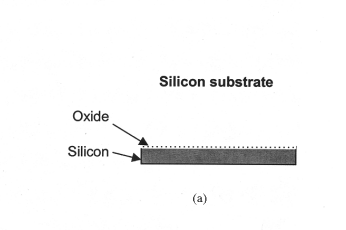F UTURE ultralarge telescopes are currently envisioned by the National Aeronautics and Space Administration (NASA) and other academic institutions. The primary optics for these systems could be as large as 30 m in diameter. The development of extremely large telescopes is scientifically driven by the need to achieve high-contrast imaging and spectroscopic capabilities to enable the detection and characterization of extra-solar planetary systems and their precursor disk material. By significantly improving image quality over the state-of-the-art, it is hoped that these future telescopes will be capable of detecting faint objects in close proximity to bright sources. Ultimately, in order to achieve the necessary high-contrast imaging of extra-solar planetary systems, the development of advanced deformable mirror technologies for higher-order wavefront correction is essential. These deformable mirrors will be large, approximately 30 cm in diameter, with an array of individual actuators, required for correcting the wavefront errors (see Fig. 1). Thus, an optical quality, scalable, large deformable mirror with a low influence function (negligible inter-actuator coupling) is required for higher-order wavefront error correction over large areas.
Several wafer-scale transfer techniques have been developed to transfer devices or thin films over other substrates. Some of these techniques are capable of transferring thin-film microstructures, however such transfer processes have been successful only for small device geometries. Wafer-scale transfer techniques utilizing adhesives and/or molding materials have also been developed, . However, the use of intermediate sacrificial polymers is not suited for the wafer-scale transfer of large format continuous mirror membranes, because complete, residue-free removal of the sacrificial polymeric materials is required. Polymer-etching processes often leave residues on the transferred membrane, and would therefore degrade the high surface quality required for the mirror membranes. The development of an “intermediate-sacrificial-layer-free”, large-scale, membrane transfer technique is essential for the realization of large deformable mirrors for future large telescope applications.
In this paper, our novel approach to wafer-scale transfer is described, along with some of the results of the performance characterization. We have successfully demonstrated the membrane transfer process using 10 cm diameter silicon wafers. Scaling the transfer process to much larger diameters is easily achieved and is essentially a matter of selecting larger silicon wafers. Our focus in this paper is primarily to demonstrate the proof-ofprinciple for a new wafer-scale membrane transfer fabrication technique capable of meeting the demanding requirements for surface quality and scalability for future large area deformable mirror applications.

Fig1
As in the previous case, SOI carrier wafers are used for the fabrication of the wafer-scale single-crystal silicon mirror membrane. The mirror membrane transfer process involves the transfer of the single-crystal silicon layer from the SOI wafer following the metallization, bonding and etching processes as shown in Fig. 6. Additional processing steps such as the patterning of corrugations and the deposition of polysilicon membrane are not required in this case. The thickness of the transferred membrane is determined by the thickness of the SOI top silicon layer.
These applications of this technique extend to the fabrication of many other microdevices such as actuators, optical connectors, and RF switches in addition to deformable mirrors. The deformable mirror concept described in this paper is targeted for insertion into adaptive optics systems for future ultra-large telescope systems.
上一篇: 晶圆级热压键的表征